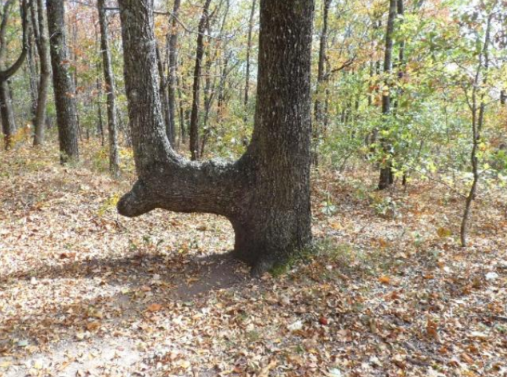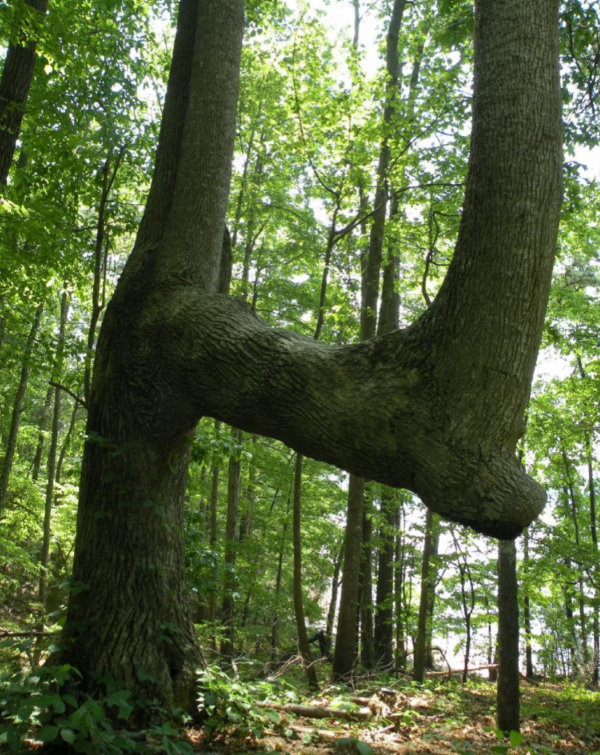When navigating dense forests in the past, people developed unique strategies to mark their paths. Native Americans used a clever method that involved bending trees, leaving behind enduring trail markers. These trees, known as “trail trees,” played a crucial role in guiding travelers through rugged terrain, pointing them to essential resources like food and water.

To create these markers, Native Americans planted a fragment of a tree in an opening and allowed it to grow around it, resulting in a distinctive bend. Identifying these trail trees is possible by looking for a “nose” or notch at the end of the bend and scars from the straps used when the trees were young.
These remarkable trees, often over 150 years old, can be found throughout the United States. While some may view them as natural oddities, they hold immense historical significance. Although modern technology has rendered them obsolete for navigation, their value lies in their tales of the past.

The Mountain Stewards website is dedicated to preserving and documenting over 1,000 of these twisted trees across the country, ensuring their legacy endures. These trail trees, though no longer essential for navigation, continue to tell a fascinating story of Native American ingenuity and resourcefulness in the wilderness.